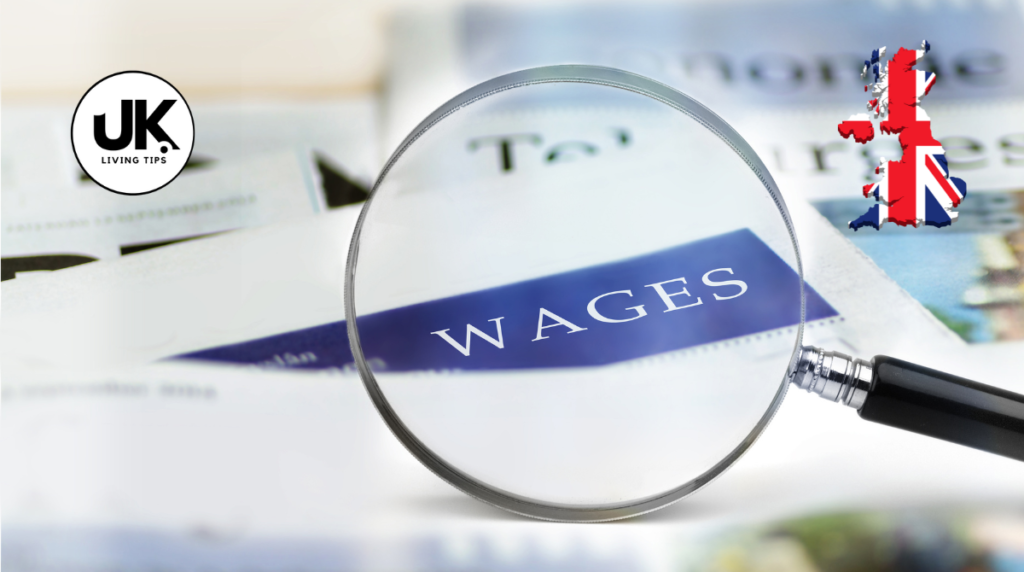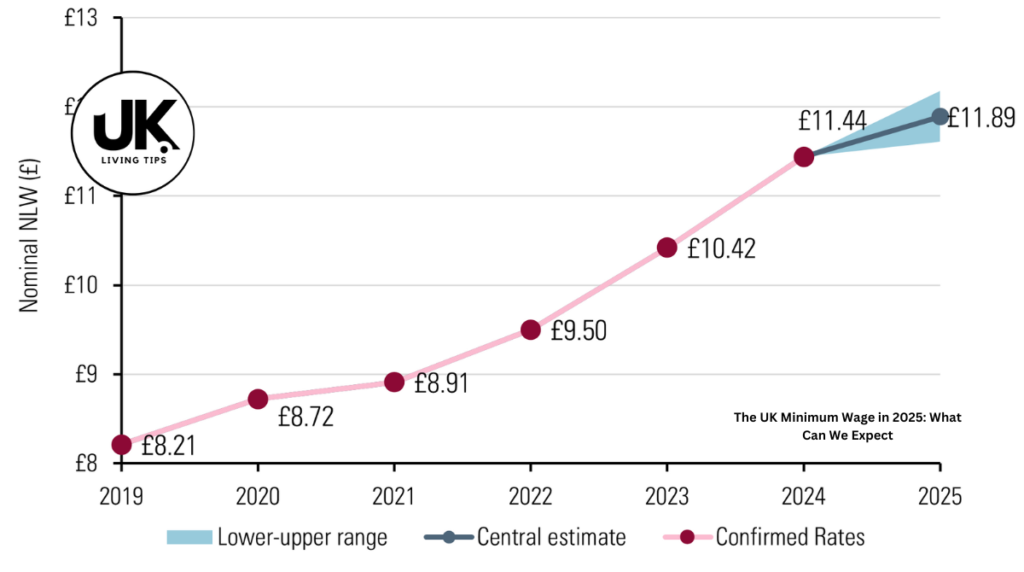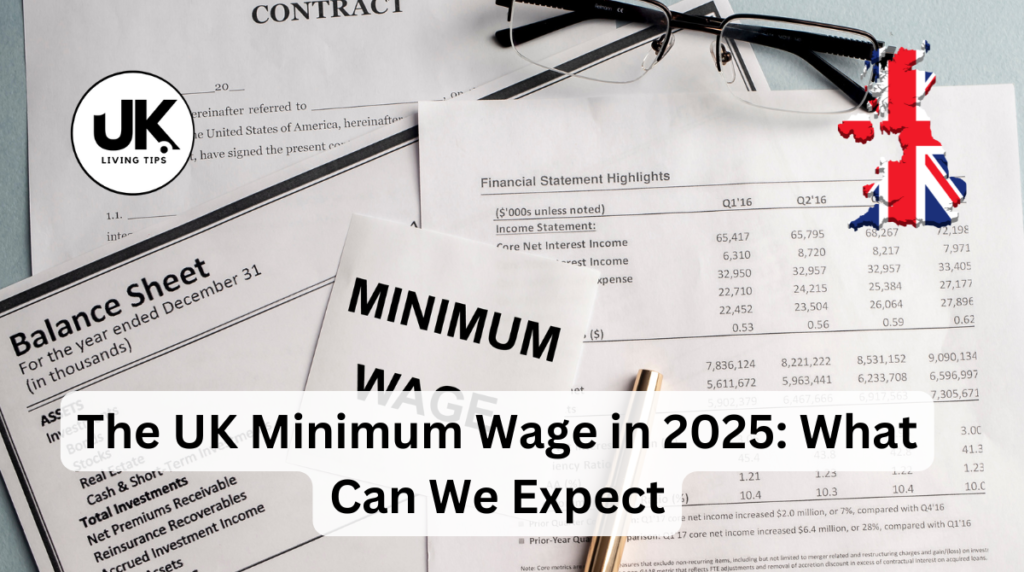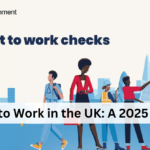UK Minimum Wage in 2025
The minimum wage is something that touches almost all of us, whether we’re earning it, managing teams who are, or just interested in the economic landscape. It’s the legal floor for what a worker must be paid per hour, and it’s a topic that’s regularly reviewed and tweaked.
In the UK, we have the “National Living Wage” (NLW) for those aged 21 and over, and the “National Minimum Wage” (NMW) for younger workers. These aren’t just arbitrary numbers; they’re carefully considered by the government, advised by the Low Pay Commission (LPC), and intended to strike a balance between fair pay and economic reality.
Overview
READ ALSO: Right to Work in the UK: A 2025 Guide
Visit the official website: click here
So, let’s look ahead to 2025. What can we anticipate regarding minimum wage rates? This isn’t a crystal ball exercise – we can’t know the exact figures yet, but we can explore the likely influences, trends, and what experts are saying.
Understanding the Current Landscape
Before we jump to 2025, let’s quickly recap where we are in 2024. For those 21 and over, the NLW has recently seen a significant boost, landing at £11.44 an hour (as of April 2024). This was a substantial increase, bringing us closer to the government’s target of two-thirds of median earnings.
For younger workers, the rates are lower, reflecting their position on the pay scale and the fact that they are often still in training or gaining experience.
Here’s a quick reminder:
- National Living Wage (NLW): For those aged 21 and over.
- National Minimum Wage (NMW): For those under 21 and apprentices. This is broken down into further age bands.
Factors Influencing the 2025 Minimum Wage

Now, let’s think about the factors that are likely to impact minimum wage decisions for 2025:
- The Low Pay Commission (LPC): This independent body plays a crucial role. They gather evidence, consult widely with employers, workers, and other stakeholders, and then make recommendations to the government about the appropriate level for the minimum wage. Their advice is a key determinant in what rates are eventually set.
- Economic Conditions: The overall state of the economy is a huge factor. Things like inflation, unemployment rates, and the cost of living are all closely monitored. If inflation remains high, for example, we might see upward pressure on minimum wages to ensure workers’ real earnings aren’t eroded.
- Government Policy: The government’s political agenda, their stated targets, and any wider social or economic strategies all play a part. A government focused on increasing wages or tackling in-work poverty might be more inclined to push for higher minimum wages.
- The “Two-Thirds of Median Earnings” Target: As mentioned earlier, the government’s ambition is to reach a national living wage that equates to two-thirds of the median earnings. We’ve made big steps towards this in recent years, and this target will likely remain a key guiding factor.
- Business Concerns: While the focus is often on workers, employers’ views are crucial too. Higher minimum wages will affect business costs, particularly in sectors with many lower-paid roles. The LPC needs to balance the need for fair pay with the impact on businesses, aiming to avoid negative consequences such as job losses or slower growth.
- The Impact of the COVID-19 Pandemic: While the pandemic’s most intense phase has passed, it has had long-term impacts on the labour market and the wider economy. These ripple effects continue to shape how we think about fair pay and the security of lower-paid workers.
- Global Economic Trends: The UK isn’t operating in a bubble. Global economic shifts, supply chain issues, and international trade patterns all influence the decisions made here at home.
What the Experts are Saying

While we can’t pinpoint the exact numbers, economists and policy analysts are providing clues about the direction of travel.
- Continued Upward Pressure: The general sentiment is that we will likely see continued upward pressure on minimum wages in 2025. The government’s two-thirds target hasn’t been reached across all wage brackets, and the cost of living is still a major concern for many.
- Focus on Younger Workers: Some analysts suggest that we might see closer attention on the NMW rates for younger workers. The gap between the NLW and the rates for those under 21 might be a focus of review, to determine if there’s room for more support.
- Debate about Affordability: There is still discussion around the long term sustainability of increases and how to balance protecting wages without impacting businesses. This debate is likely to play out as the LPC makes its recommendations.
- The Importance of Real Wages: Much of the emphasis is on the concept of ‘real wages’ – the actual purchasing power of what someone is earning after taking inflation into account. Ensuring that wages are keeping pace with rising prices is key to making people’s financial situations feel more stable and manageable.
Age-Based Projections for 2025 :
The following table presents illustrative projections for the UK minimum wage in 2025. These figures are based on extrapolating current trends and are not official predictions. It is crucial to remember this is a hypothetical scenario and actual rates may differ significantly. We assume a moderate level of inflation and economic growth in this scenario.
| Age Group | 2024 Estimated Minimum Wage (GBP/hour) | Projected 2025 Minimum Wage (GBP/hour) | Annual Percentage Increase |
| Under 18 | 5.28 | 5.70 | 8% |
| 18-20 | 7.49 | 8.10 | 8.1% |
| 21-22 | 10.18 | 11.00 | 8.0% |
| 23+ (National Living Wage) | 11.45 | 12.35 | 7.9% |
What Does This Mean for You?
The minimum wage is important whether you’re an employer, a worker, or someone who’s interested in the wider economy. Here’s a few thoughts on what it might mean for different groups:
- Workers: A higher minimum wage means more money in your pocket. It can give you a much-needed boost, making things like food, housing, and bills more affordable. However, it’s essential to remember that real wage growth is what truly matters. If wage increases are immediately eaten up by higher costs, the overall benefit can be limited.
- Employers: If the minimum wage goes up, it will increase your wage bill. You’ll need to plan accordingly, and make sure your business model remains viable. This might involve looking at how you operate, streamlining your processes, or maybe even adjusting your pricing. There are business benefits to a higher minimum wage including increased worker motivation and less staff turn over.
- Consumers If the minimum wage goes up, there may be some inflation as companies will need to increase the costs of their goods or services. However, as people earn more they will also be able to spend more.
- Job Seekers: The minimum wage changes can affect the job market, especially in sectors that rely on low-paid roles. A higher minimum wage can encourage more people to seek employment but can also reduce the number of jobs on offer as some companies look to minimise overheads.
Conclusion
The minimum wage is a vital tool for tackling low pay, and it’s crucial that we keep talking about it, scrutinising it, and making sure it works effectively. As we look towards 2025, we can expect to see continued movement on this issue, with the aim of creating a fairer and more sustainable economy.
While we can’t know the exact numbers for 2025 yet, we can keep our ears to the ground, stay informed, and be ready for whatever developments emerge. By being proactive and informed, we can all better understand the impact these changes will have on our lives and livelihoods.
In the meantime, let’s keep an eye on the official announcements, listen to what the experts have to say, and keep the conversation going. After all, the minimum wage impacts us all in one way or another.



